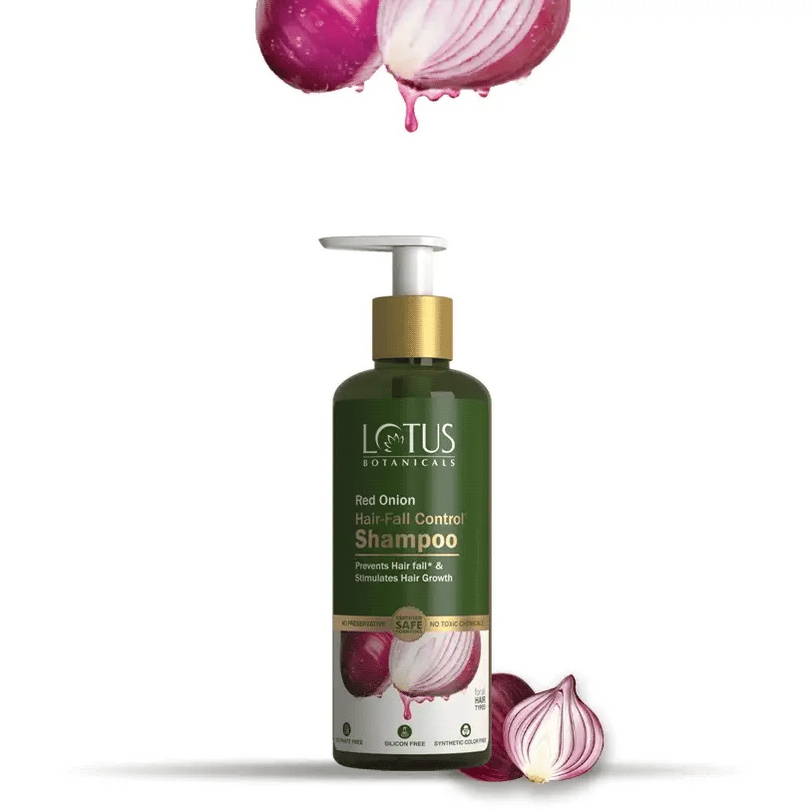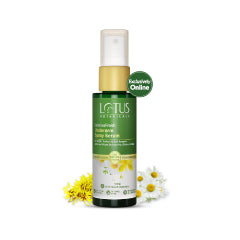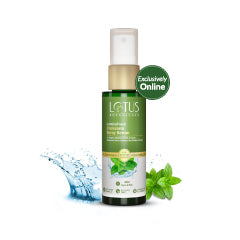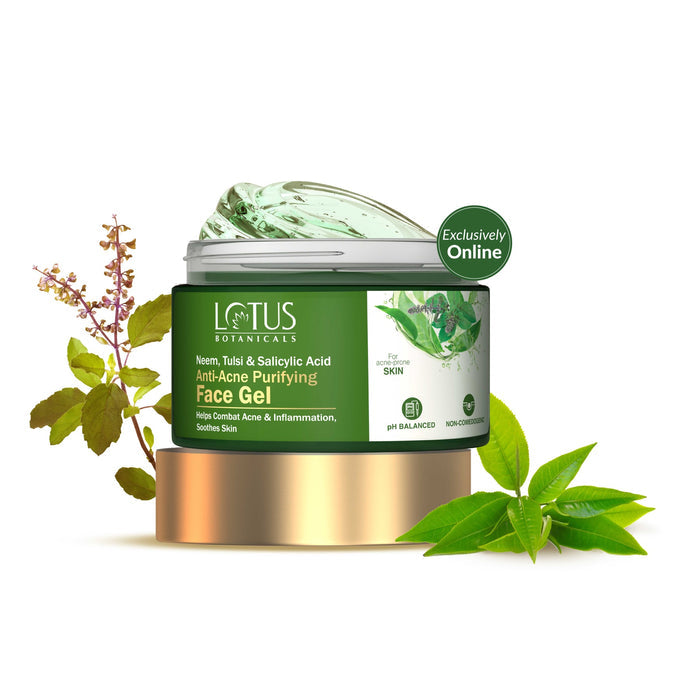
Highlights
-
Understanding Morning and Night Skincare Routines
-
Morning and Night Skincare Routine for Dry Skin
-
Morning and Night Skincare Routine for Oily Skin
-
Morning and Night Skincare Routine for Combination Skin
-
Morning and Night Skincare Routine for Acne-Prone Skin
-
Morning and Night Skincare Routine for Men
-
Morning and Night Skincare Routine for Beginners
Understanding Morning and Night Skincare Routines
The Importance of Distinct Morning and Night Regimens
The quest for healthy, radiant skin is a common goal, yet achieving it requires tailored strategies. A fundamental aspect of effective skincare is recognizing the necessity for distinct morning and night regimens. Each routine serves different purposes, adapting to the skin's varying needs throughout the day and night.
In the morning, your skin requires protection and preparation for the day ahead. A robust morning routine shields the skin from harmful UV rays, pollution, and other environmental stressors. Products like sunscreen and antioxidants are crucial. For example, consider a product from Lotus Botanicals’ Vitamin C Sunscreen, which not only protects but also revitalizes the skin with essential Vitamin C.
Conversely, nighttime routines focus on repair and rejuvenation. During sleep, your skin's blood flow increases, and the organ rebuilds its collagen and repairs damage from UV exposure, reducing wrinkles and age spots. Night regimens often incorporate intensive moisturizers, serums, and ingredients like retinoids that can be too harsh under sunlight but are perfect for overnight healing.
Overview of Skincare Routine Steps
Understanding the sequential steps in both morning and night skincare routines can significantly enhance their effectiveness. Here’s a general guideline:
- Morning routine: Start with a gentle cleanser to remove any oils accumulated overnight. Follow up with a toner to balance pH levels. Apply a serum tailored to your specific skin concerns, then moisturize to hydrate and protect your skin barrier. Always finish with a broad-spectrum sunscreen to guard against daily sun exposure.

- Night routine: Begin with an oil-based cleanser to deeply remove sunscreen and makeup, followed by a water-based cleanser for thorough cleaning. Apply toner, then use treatments like serums or acids (AHAs/BHAs) that target specific issues such as acne or pigmentation. Finish with a rich night cream or a hydrating overnight mask to lock in moisture.

Both routines might be adjusted according to skin type or particular issues. For instance, individuals with oily skin may opt for lightweight gel-based moisturizers instead of heavier creams. Understanding your skin's unique needs is crucial—consulting with a dermatologist can provide personalized insights.
Q: Should I use the same moisturizer for both day and night?
A: It's advisable to use different moisturizers; daytime formulas should be lighter and contain SPF while nighttime formulas should focus more on repair and hydration without SPF.
Q: How often should I update my skincare routine?
A: Skincare needs can change with seasons, age, and health factors. It’s recommended to review your routine every few months or consult a skincare professional regularly.
Q: Can I skip sunscreen if I'm indoors all day?
A: UV rays can penetrate windows, so it's beneficial to wear sunscreen even when indoors, especially if you're near windows for extended periods.
Morning and Night Skincare Routine for Dry Skin
Essential Products and Their Order for Dry Skin
Having dry skin requires a well-thought-out skincare routine to ensure maximum hydration and skin health. The correct order of applying skincare products enhances their effectiveness, making each step crucial.
Morning Routine:
- Cleanser: Start with a gentle, hydrating cleanser that doesn’t strip your skin of its natural oils.
- Toner: Use an alcohol-free toner to help balance the pH of your skin and prepare it for better absorption of other products.
- Serum: Apply a hydrating serum that contains hyaluronic acid which retains moisture and strengthens the skin barrier.
- Moisturizer: Use a deep moisturizer to lock in hydration. Look for ingredients like glycerin, ceramides, and natural oils.
- Sunscreen: Finish with a broad-spectrum sunscreen. A hydrating sunscreen formula can be found at Lotus Botanicals.
Night Routine:
- Cleanser: Repeat the morning cleansing process to remove impurities and makeup from the day.
- Toner: A soothing toner can assist in calming the skin and further cleansing.
- Serum/Night Cream: Use a richer, nourishing night cream or a specific reparative serum to support skin regeneration overnight.
- Eye Cream: Hydrate the delicate eye area to reduce puffiness and dark circles.
- Occlusive: In very dry conditions, consider an occlusive agent like petroleum jelly over particularly parched areas to prevent moisture loss.
Tips to Maximize Hydration and Nourishment
To further enhance your skincare routine for dry skin, consider integrating these additional tips to lock in moisture and promote overall skin health:
- Avoid hot showers, as tempting as they are, because they can strip your skin of essential oils. Instead, opt for lukewarm water.
- Increase water intake. Hydration starts from within, so ensure you're drinking plenty of water throughout the day.
- Use a humidifier in your room especially during dryer seasons or if you are often in air-conditioned environments which can dehydrate your skin further.
- Include foods high in Omega-3 fatty acids such as fish, nuts, and seeds in your diet to help fortify your skin's lipid barrier.
Q: How often should I exfoliate if I have dry skin?
A: Limit exfoliation to once or twice a week. Over-exfoliating can strip the skin of essential oils. Opt for gentle exfoliators that don't damage your skin's surface.
Q: Can layering multiple hydrating products cause my skin to become too oily?
A: When dealing with dry skin, layering multiple hydrating products can be beneficial as long as they are non-comedogenic (won't clog pores) and suited for dry skin types. Always allow each product to absorb fully before applying the next layer.
Q: Is it necessary to change my skincare routine seasonally?
A: Yes, adapting your skincare routine according to the season is crucial. Winter often requires more substantial moisturizing products while summer might need lighter formulations alongside increased sunscreen protection.
Morning and Night Skincare Routine for Oily Skin
Selecting the Right Products for Oil Control
Managing oily skin requires a delicate balance of removing excess sebum without stripping the skin of its natural moisture. Choosing the right skincare products is crucial in maintaining this balance. For morning routines, start with a gentle, oil-free cleanser that can effectively clean the pores without causing dryness. Ingredients such as salicylic acid are excellent as they help to break down oil in the pores without over-drying the skin.
Following cleansing, a toner that helps to control oil and minimize pores can be beneficial. Look for toners containing witch hazel or niacinamide, which regulate sebum production and improve skin texture. During the day, protecting your skin from sun exposure with an oil-free sunscreen is essential. Consider products like Vitamin C sunscreen for added antioxidant protection alongside SPF.
At night, your focus should shift towards deep cleansing and repairing the skin. A double cleanse starting with an oil-based cleanser followed by a water-based cleanser can effectively remove all traces of makeup and buildup without over-stripping. Exfoliating with products containing AHAs or BHAs a few times a week can help maintain clear pores. However, it's crucial to not over-exfoliate as this can lead to increased oil production and irritation.
Balancing Moisture without Excess Oil
The key to moisturizing oily skin is choosing lightweight, non-comedogenic products that hydrate without adding extra oil. Water-based or gel moisturizers are ideal as they absorb quickly and help maintain optimal hydration levels. Ingredients like hyaluronic acid attract moisture to the skin without creating an oily sheen and can be found in many lightweight formulations.
Nighttime provides an opportunity to use products that help balance oil production while you sleep. Retinoids can regulate skin cell turnover and reduce oiliness over time. Ensure these are applied on alternate nights initially to build tolerance and avoid irritation.
For both morning and night routines, avoiding heavy, occlusive creams is crucial. Instead, opt for layers of light hydration—such as serums followed by moisturizers—to maintain healthy, balanced skin without contributing to more oil.
Q: What type of cleanser is best for oily skin?
A: Gel-based or foam cleansers with salicylic acid or glycolic acid work best for oily skin as they help break down excess oils without overly drying the skin.
Q: How often should I exfoliate if I have oily skin?
A: It's generally recommended to exfoliate oily skin 2-3 times a week with a chemical exfoliant like BHA or AHA to prevent clogged pores without causing irritation.
Q: Can moisturizers increase oiliness?
A: Not if you choose the right type! Opt for light, non-comedogenic moisturizers that are water-based or gel-type; these will hydrate your skin without adding extra oil.
Morning and Night Skincare Routine for Combination Skin
Managing Dry and Oily Zones Effectively
Combination skin is characterized by a mix of oily areas, typically on the forehead, nose, and chin (the T-zone), along with dry patches commonly found on the cheeks. Managing these contrasting zones requires a balanced approach to ensure each area receives appropriate care without exacerbating the other.
The key to managing combination skin effectively lies in the use of gentle, yet effective products that can address both excess oil and dryness without causing irritation. Starting your morning routine with a mild cleanser that targets oil without stripping the skin is essential. A gel-based or foam cleanser works well for removing overnight build-up primarily in the oily T-zone while being gentle enough for drier parts.
Post cleansing, using a toner can help restore pH balance and refine pores but choosing the right type is crucial. An alcohol-free toner with ingredients like witch hazel or green tea can soothe the skin while managing oil production. Following up with a lightweight moisturizer that has hydrating properties, like hyaluronic acid, ensures that the dry areas are adequately moisturized without making the oily zones greasy.
At night, your skin needs components that help in recovery and rejuvenation. Double-cleansing may be beneficial where you start with an oil-based cleanser to dissolve makeup and sunscreen from the day, followed by your morning gel-based cleanser. Applying a night-specific, non-comedogenic moisturizer can enhance moisture levels overnight without clogging pores.
Ideal Products for Combination Skin
Finding products that are suitable for combination skin involves looking for formulations that balance hydration and oil control. Ingredients play a pivotal role here. For instance, glycolic acid and salicylic acid help in gently exfoliating the skin to keep pores clear and improve skin texture, especially in oily zones.
A lightweight, broad-spectrum sunscreen is indispensable in your morning routine. Opting for a formula like the Vitamin C Sunscreen available at Lotus Botanicals helps protect against UV damage while brightening the skin tone. For moisturizers, seek out dual-action formulas that offer oil-free hydration—products featuring dimethicone or ceramides are excellent as they provide moisture without adding oiliness.
Including serums or boosters targeted at specific concerns can also enhance your skincare routine. A hydrating serum containing hyaluronic acid works wonders overnight by retaining water in the dry patches of the skin, ensuring you wake up with a balanced complexion.
Q: What is the best way to apply products to combination skin?
A: Begin by applying products lightly on your entire face, then add an extra layer of moisturizer or targeted treatment serums on drier areas while keeping the T-zone less congested.
Q: Can I use multiple active ingredients in my skincare routine?
A: Yes, but it's important to not overload your skin with too many actives at once. Introduce new products gradually and monitor how your skin responds before adding more into your regimen.
Q: How often should I exfoliate combination skin?
A: Exfoliating 1-2 times a week is generally sufficient. Focus more on the oily zones but be gentle on dry areas to avoid irritation.
Morning and Night Skincare Routine for Acne-Prone Skin
Combatting Acne with Targeted Skincare Steps
When you have acne-prone skin, every step in your skincare routine should aim to soothe and treat existing breakouts while preventing new ones. Your morning routine should focus on protection from the environmental factors, whereas your nighttime routine should aim to heal and repair.
Morning Routine:
- Cleansing: Start with a gentle cleanser that doesn't strip your skin of its natural oils, which can lead to more breakouts. A salicylic acid-based cleanser can be particularly effective as it helps to unclog pores and reduce inflammation.
- Toning: Use a toner that contains niacinamide or witch hazel to help reduce oiliness and refine pores.
- Serum: Apply a serum that contains benzoyl peroxide or tea tree oil, both known for their antibacterial properties that help treat existing acne and prevent future breakouts.
- Moisturizer: Opt for an oil-free, non-comedogenic moisturizer to hydrate your skin without clogging pores.
- Sunscreen: Finish with a broad-spectrum sunscreen designed for oily or acne-prone skin. Consider products like the Vitamin C Sunscreen from Lotus Botanicals, which offer protection without exacerbating acne.
Nighttime Routine:
- Makeup Removal: If you wear makeup, ensure all of it is thoroughly removed with a micellar water or an oil-based cleanser designed for sensitive skin.
- Cleansing: Follow up with your gentle cleanser to ensure all impurities are removed, setting the stage for effective overnight healing.
- Exfoliation: Incorporate gentle exfoliation with AHAs or BHAs two to three times a week to help remove dead skin cells and promote cell turnover. Check out the detailed guide on AHAs and BHAs at Lotus Botanicals.
- Treatment Serums: Apply serums that target acne scars and marks, such as those containing hyaluronic acid or retinol.
Night Cream: Use a light night cream that supports skin repair and combats inflammation throughout the night. Visit Lotus Botanicals' Day Cream collection at here.
Preventative Skincare for Acne Breakouts

To prevent acne breakouts effectively, it’s crucial to understand and minimize the triggers. Common triggers include hormonal changes, stress, improper diet, and inadequate skincare routines. Establishing a consistent skincare regimen is paramount in keeping your skin clear and healthy.
- Avoid heavy makeup which can clog pores and worsen acne.
- Maintain a diet low in sugar and dairy products as they can trigger hormonal fluctuations leading to breakouts.
- Incorporate anti-inflammatory ingredients into your skincare like green tea or aloe vera which soothe the skin and reduce redness.
- Stay hydrated by drinking ample water throughout the day which helps in detoxifying the skin naturally.
Q: How often should I change my pillowcase to help prevent acne?
A: It's recommended to change your pillowcase at least once a week to prevent the buildup of oils and dirt that can contribute to acne.
Q: Are there specific foods I should avoid to help control my acne?
A: Yes, try reducing intake of dairy products and high glycemic foods like white bread and sugar as they may aggravate acne by causing hormonal imbalances.
Q: Can stress really affect my skin's health?
A: Absolutely. Stress can trigger the body to produce more hormones that stimulate oil production, which can lead to breakouts. Managing stress through activities like yoga or meditation might help improve your skin condition.
Morning and Night Skincare Routine for Men
Simplified Skincare Steps for Men
The essence of a great skincare routine lies in its simplicity and effectiveness, tailored to specific skin types and needs. For many men, skincare seems daunting, but establishing a morning and night routine can be straightforward.
Morning Routine: The morning routine should focus on protection from the elements.
- Cleansing: Start with a gentle cleanser to remove overnight oil build-up. Choose a product that matches your skin type—oily, dry, or combination.
- Hydrating: After cleansing, apply a light moisturizer or a hydrating serum with hyaluronic acid to keep the skin supple and ready for the day ahead. Learn more about hyaluronic acid in our detailed guide here.
- Sun Protection: Finish with a broad-spectrum sunscreen. A product like Vitamin C Sunscreen not only protects against UV rays but also fights free radicals with antioxidants.
Night Routine: The night routine should focus on repair and rejuvenation.
- Cleansing: Remove the day's dirt and oil build-up with a gentle cleanser.
- Treatment: Apply treatments such as retinoids or exfoliating acids (AHAs, BHAs) to enhance skin texture and reduce imperfections over time. Get familiar with these ingredients by visiting this comprehensive FAQ.
- Moisturizing: A richer night cream or face oil can help lock in moisture and aid the skin’s overnight recovery process.
Addressing Common Skin Issues in Men
Men often face specific skin challenges due to factors like higher sebum production and frequent shaving. Here are some common issues and how to address them effectively:
- Acne and Breakouts: Regular cleansing and using products with salicylic acid can help manage acne. Avoid heavy, comedogenic creams which can exacerbate issues.
- Razor Burns and Irritation: Using a soothing aftershave treatment containing ingredients like aloe vera or tea tree oil can help calm irritation. Also, ensuring your razor is sharp and clean significantly reduces the risk of irritation.
- Dry Skin: Incorporate hydrating ingredients into every step of your routine, from cleansers to moisturizers. Products containing ceramides or fatty acids are especially beneficial for dry skin.
To explore more skincare products specifically designed for men's common skin issues, visit Lotus Botanicals' men’s care collection at their website: Lotus Botanicals.
Q: How often should men exfoliate their skin?
A: Men should aim to exfoliate their skin 2-3 times per week. This helps prevent over-exfoliation which can lead to skin sensitivity and irritation.
Q: Can men use the same skincare products as women?
A: Yes, skin type is more important than gender when choosing skincare products. However, some formulations may be specifically tailored to address issues more prevalent in men’s skincare, such as thicker skin or increased sebum production.
Q: Are there any lifestyle factors that affect men's skin health?
A: Yes, factors like diet, hydration, sleep, stress levels, and exposure to pollutants play significant roles in skin health. Maintaining a balanced lifestyle helps improve overall skin condition.
Morning and Night Skincare Routine for Beginners
Basic Steps to Kickstart Your Skincare Journey
Embarking on a skincare journey can seem daunting at first, but with the right steps, it becomes an enjoyable daily ritual that nurtures your skin. Whether you're dealing with dryness, oiliness, or just want to maintain healthy skin, beginning with a basic routine is crucial.
Morning Routine:
- Cleansing: Start your day by gently cleansing your face to remove any overnight oils and impurities. Use a mild cleanser suitable for your skin type.
- Toning: Apply a toner to help restore your skin’s pH balance and refine pores. A hydrating toner is preferred for dry skin, while an astringent toner might be better for oily skin.
- Serum: Consider using a vitamin C serum during the day to protect against pollution and UV rays. Serums are packed with active ingredients that target specific concerns like brightening or anti-aging.
- Moisturize: Hydrate your skin with a moisturizer that suits your skin type. For extra hydration, those with dry skin might opt for a richer cream.
- Sunscreen: Never skip the sunscreen. Protect your skin from harmful UV rays to prevent premature aging. Explore products like Vitamin C Sunscreen for added benefits.
Night Routine:
- Double Cleanse: Start by removing makeup and then cleanse again to ensure all impurities are removed. This is crucial for preventing acne and other skin issues.
- Tone: Apply toner just as you would in the morning to calm the skin and prepare it for better absorption of other products.
- Treatment Products: Nighttime is ideal for treatment products like retinoids or exfoliating acids (AHA/BHA). These products help in cell turnover and have rejuvenating properties.
- Moisturize: Use a night cream to deeply moisturize and repair the skin overnight. Ingredients like hyaluronic acid can be very beneficial here.
Do’s and Don’ts for Beginners

Navigating through the myriad of skincare advice can be overwhelming. Here are some essential do’s and don’ts that every beginner should consider:
- Do patch test new products to check for allergic reactions before applying them over large areas.
- Do invest in high-quality products from reputable sources to ensure the health of your skin. For instance, explore reliable collections like those at Lotus Botanicals.
- Don’t over-exfoliate as it can strip the skin of its natural oils leading to more harm than good.
- Don’t use too many active ingredients at once. Starting slowly allows you to gauge how your skin reacts and adjust accordingly.
"Building a skincare routine should be about listening to what your skin needs rather than following complicated trends." - Skincare Expert Jane Doe
Q: How often should I change my skincare products?
A: It's essential to assess how your skin reacts over a period (typically 4-6 weeks) before making changes unless you experience immediate adverse reactions.
Q: Is it necessary to have separate routines for morning and night?
A: Yes, morning routines aim at protecting your skin from the sun and environmental pollutants while night routines focus on repair and rejuvenation while you sleep.
Q: Can I skip sunscreen if I'm indoors all day?
A: Even indoor environments can expose you to UVA rays through windows, so applying sunscreen as part of your morning routine is recommended regardless of your plans.
Conclusion
Recapping Effective Skincare Practices for All Types
Throughout this article, we've explored various skincare routines tailored to meet the unique needs of different skin types, from dry to oily. Effective skincare hinges on understanding the specific requirements of your skin type. For instance, dry skin benefits immensely from hydrating serums and rich moisturizers that lock in moisture, whereas oily skin may require water-based products and regular exfoliation to manage sebum levels.
Key practices include gentle cleansing, adequate hydration, sun protection with products like Vitamin C sunscreen, and targeted treatments using ingredients such as hyaluronic acid for hydration or salicylic acid for acne-prone skin. A magic ingredient like sandalwood powder also plays a pivotal role in soothing and healing skin problems effectively.
Analogous to the personalized care we recommend for your skin, you could think of these routines as crafting a custom theme park experience. Just as you would select rides based on your comfort and excitement levels, skincare should be customized to fit your skin's unique needs without overwhelming it.
Encouraging Consistency in Your Routine
The cornerstone of any successful skincare regimen is consistency. Much like the way a water park maintains its allure—through regular maintenance and updates—your skin requires consistent care to reveal its best version. Implementing a morning and night routine tailored to your specific needs helps in combating various skin issues while promoting overall skin health.
To build a habit, start with simple steps. For instance, always cleanse your face after waking up and before going to bed. Gradually incorporate additional steps such as toning, moisturizing, and applying sunscreen during the day. Over time, these actions will become second nature. Remember, the goal is not immediate perfection but gradual improvement.
Consistency is key, not just in the products you use but also in how regularly you apply them. Regular use increases product efficacy and allows you to better gauge how well your skin is responding to the treatment.
Q: How often should I change my skincare products?
A: You should consider changing your skincare products when they no longer suit your skin type or fail to address new or evolving skin concerns. However, always allow 6-8 weeks of regular use before deciding on their effectiveness.
Q: Can I use the same moisturizer for both day and night?
A: While it's possible, it's beneficial to use a lighter moisturizer during the day that includes SPF and a richer, more nourishing formula at night to support skin repair during sleep.
Q: Is it necessary to use sunscreen even if I'm indoors most of the day?
A: Yes, it is recommended to wear sunscreen daily as UVA rays, which contribute to premature aging, can penetrate window glass. Consider using a product like Vitamin C Sunscreen for broad-spectrum protection.
Highlights
-
Understanding Morning and Night Skincare Routines
-
Morning and Night Skincare Routine for Dry Skin
-
Morning and Night Skincare Routine for Oily Skin
-
Morning and Night Skincare Routine for Combination Skin
-
Morning and Night Skincare Routine for Acne-Prone Skin
-
Morning and Night Skincare Routine for Men
-
Morning and Night Skincare Routine for Beginners


















